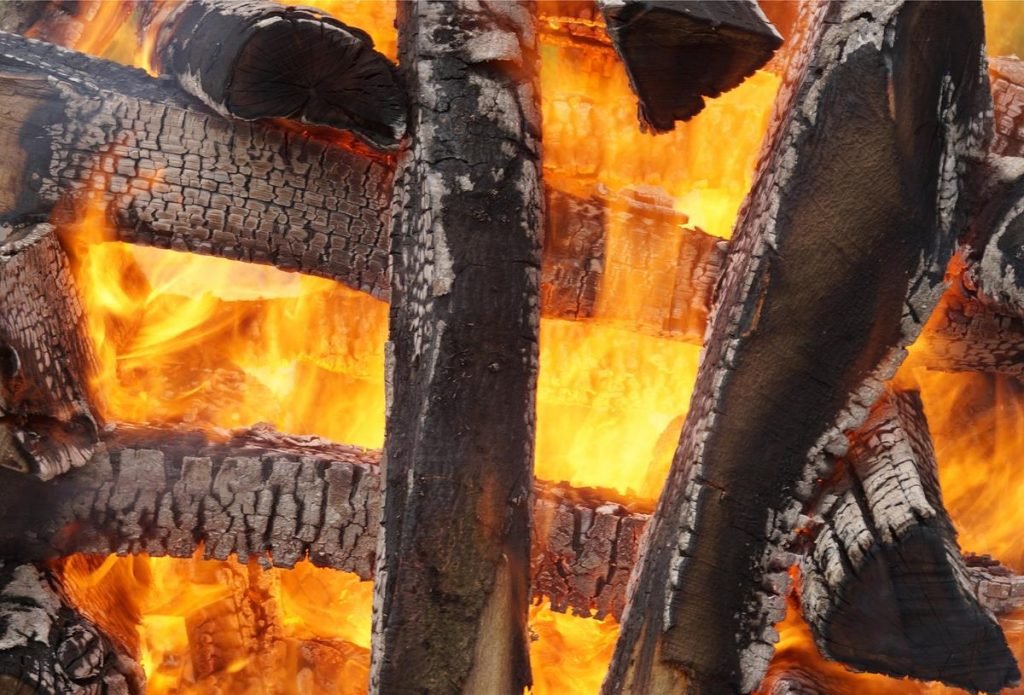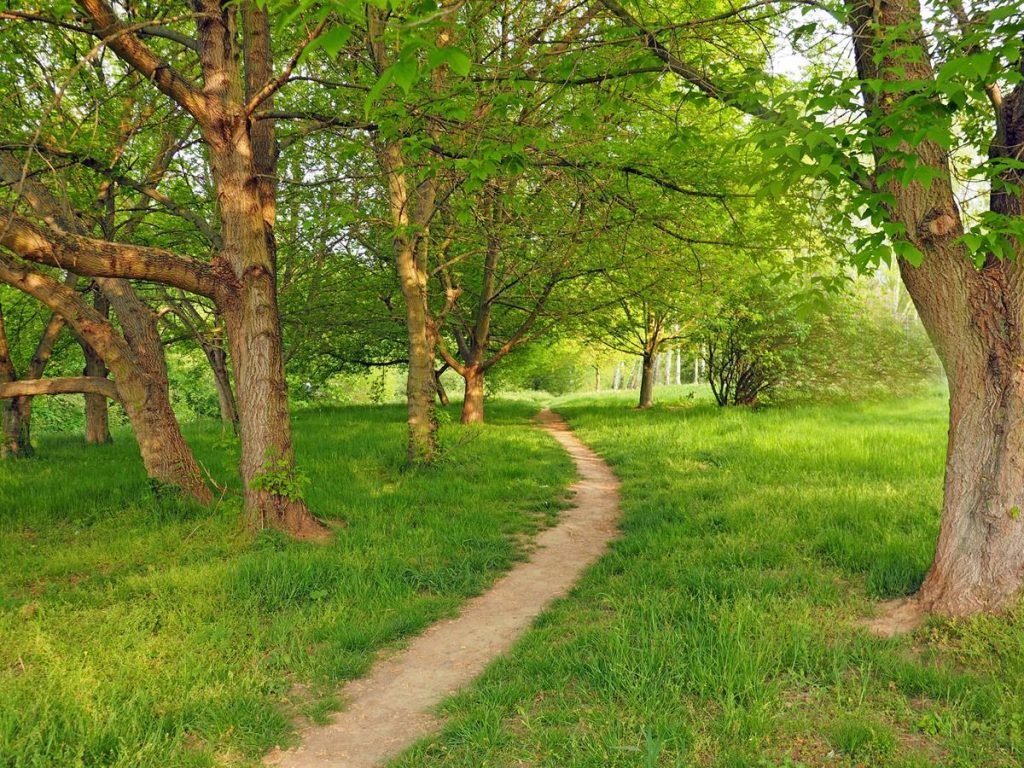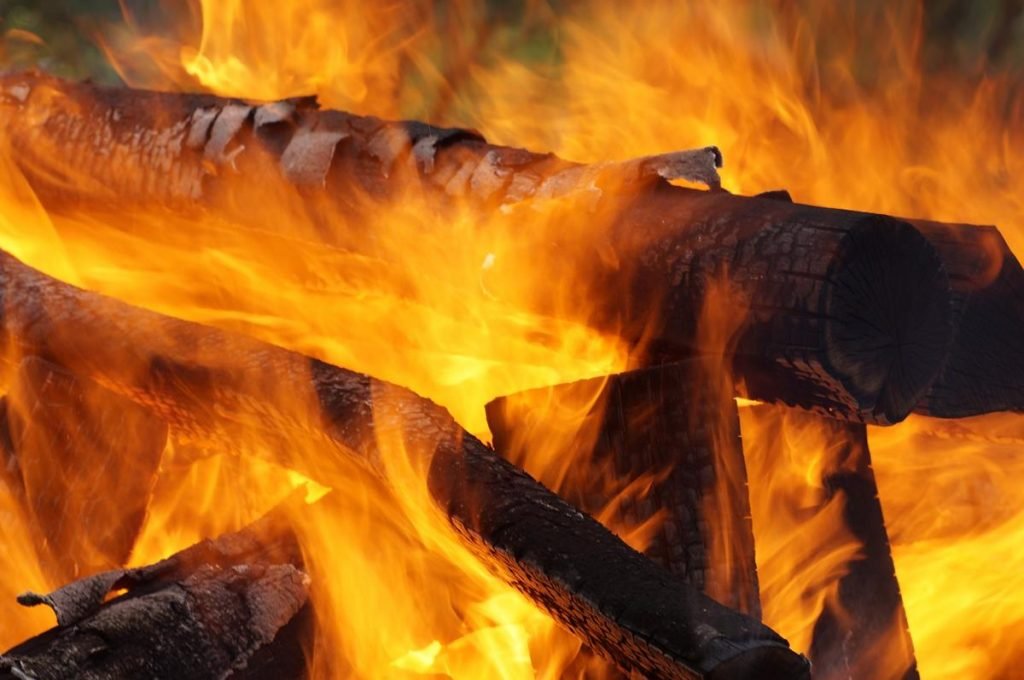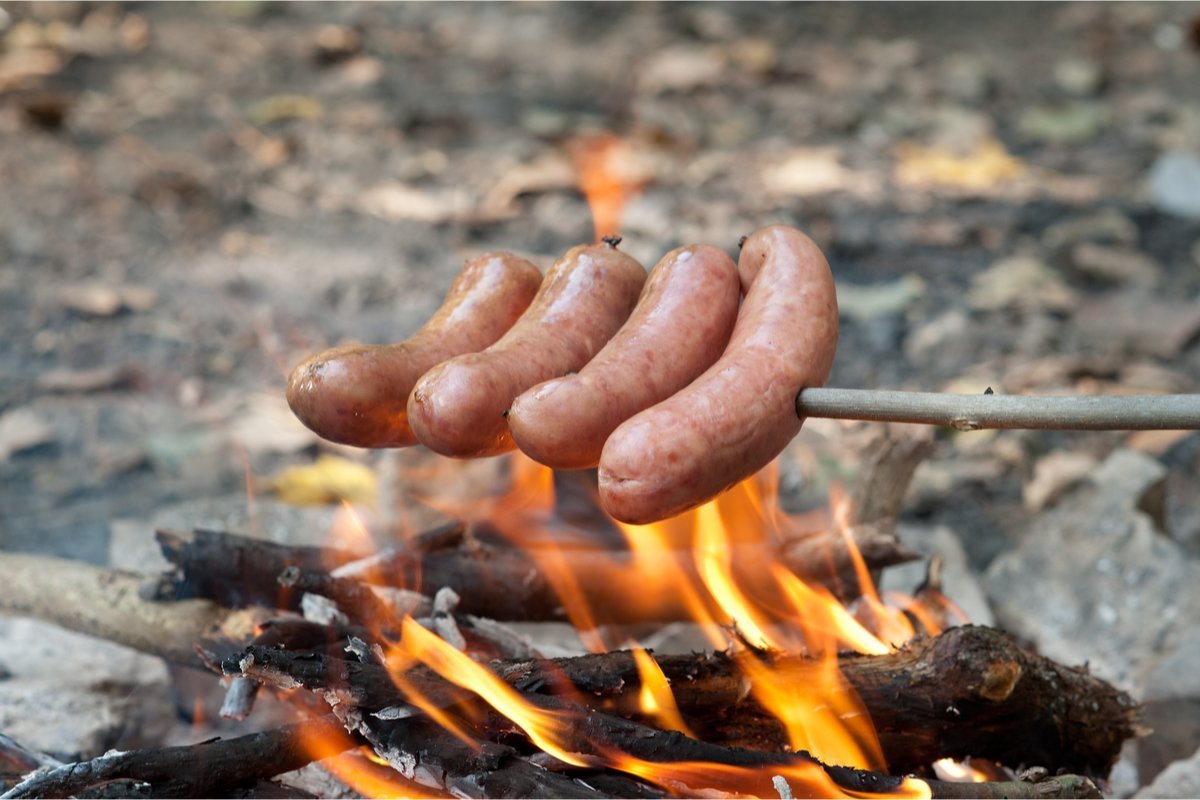The idea of camping evokes thoughts of sitting around a campfire while relaxing on a starry night somewhere in the countryside. I guess most of us think of a blazing fire with lots of warmth and flames.
But before you can light a fire, you need firewood to fuel the campfire. How much firewood you need depends on many things:
- Type of fire
- cooking campfire
- dance around
- stare at in contemplation of life, the universe, and, everything…
- Type of firewood
- Local environment – large campfires in forests are not a good idea
- Local rules – are campfires allowed
What is the best firewood for camping?
There is an inviolable rule for fueling a campfire – “Never cut growing wood”. There is no need to damage, healthy, growing trees. Fresh, green wood doesn’t burn well and would create lots of smoke. There is usually plenty of dead fall that can be readily gathered.
There are so many timber varieties, that you may have problems making the right choice. This post discusses the different types of firewood used for campfire and how to estimate the right amount of wood for your needs.
The best timber for firewood is hardwood varieties because they burn for several hours and produce quality coals that retain heat for several hours.
Oak
Oak is one of the best woods for campfires. Oaks are found all over North America.

Oak burns slowly and steadily. It is a hard wood with a high heat capacity. The coals can last several hours, making it ideal for relaxing nighttime campfire for the family.
The embers are perfect for cooking those foil wrapped dishes – corn and potatoes being a particular favorite. It is also perfect for S’mores and toasting marshmallows.

Birch
Birch is a compelling option due to its long burning period and bright flame with few sparks. It also produces plenty of heat, making it ideal for cold nights.

Despite being a dense hardwood, Birch does not take long to season and will be ready for use in a campfire a few months after cutting.
Ash
Ash is a hardwood that produces a steady flame and adequate heat to keep campers warm during cold nights. It also splits easily if you need to lighten it for fast ignition. However, it produces thick smoke, which may irritate the eyes.

Ash trees Worldwide have been devastated by Ash dieback disease. While more common in Europe, there is a great deal of concern in the US too.
If you are camping in an area rich in Ash trees you are likely to find plenty of dry wood to burn.
Hickory
Hickory burns slowly producing plenty of heat and light. It ignites easily with a bright flame and minimal smoke. Hickory is one of the most efficient burners and produces an enchanting scent that adds flavor to the foods you cook on the campfire. It rarely produces sparks, meaning that you can even roast food without risking nasty burns.

Your Choice of Campfire Wood?
In many cases you have little choice of wood for your campfire. If you are gathering your own wood, you are limited to the dead fall available.
If you are in a regulated campground, you may be able to only burn the wood you purchase from your camp shop. In this case, your choice will depend on the availability, price, and preferences, but most vendors and parks stock at least one of these hardwoods.
How much firewood do you need for a 2/3/4 hour fire?
The average purchased bundle of firewood holds around five or 6 pieces of timber. Each piece is about 12 inches long and 5 inches thick. The duration it takes to burn a split depends on the intensity of the fire and the type of wood from which it was extracted. A medium-intensity fire will burn the first bundle in about one and a half hours. However, the amount of coal and heat grows, so does the intensity of the fire.
Therefore, the second bundle may burn in about one hour. If you intend to keep the fire burning with the same intensity for 4 hours, you should buy around five bundles. These are rough estimates as the wind conditions may intensify or suppress the fire. It is always advisable to have extra firewood because the weather conditions may be so extreme that you will need the heat for the whole night.
What is the best firewood for campfire cooking?
Building a campfire for cooking needs a little practice. You need a fire that is:
- small enough to allow you to get close enough to cook
- big enough to cook an entire meal
- very low smoke – you need to see what you are doing
- going to produce some embers for foil meals, sausage on a stick, toasted marshmallows, s’mores and more.
Take a look at our articles on building a campfire for cooking, and, ideas for food to cook on a campfire.
If you only want firewood for cooking in short durations, then softwoods are a sure bet. Softwoods are easy to split and burn fast, leaving behind ash rather than coals. You can use softwoods like cedar, maple, spruce, and pine for fast cooking. If you prefer the food to heat slowing over glowing coals, hardwoods such as oaks, ash, and hickory will do. You only need to ensure that they are well seasoned to avoid producing too much smoke.
However, if you insist on the best, hard maple is my favorite firewood for cooking. It burns at a moderate rate producing a sweet scent. It also ignites very quickly, producing a steady flame with minimal smoke. Maple is not as dense as hardwood varieties, so you need to collect several bundles if you want to use it for keeping you warm on a cold evening.
How do you get firewood for camping?
Before you embark on buying firewood, check if there are state and park regulations on the transport of firewood to certain areas. Some parks only allow campers to use wood from their stores and charge a fee for accessing it. These restrictions aim to prevent campers from bringing invasive species, pests, and diseases into American parks.
If the park allows you to bring firewood from outside, obtain it from vendors who operate within 50 miles of the campsite. Only buy from certified vendors who sell seasoned wood that burns with minimal smoke. Note that some parks only accept firewood from internally-approved vendors. Further, check the park policy on collecting firewood because some parks prohibit wood gathering.
What firewood to avoid for campfires?
Avoid firewood types that produce a lot of smoke as the campsite is an enclosed space that will accumulate the smoke very fast, making it hard to enjoy the campfire. One type that can give you problems with smoke is unseasoned or poorly seasoned Oak. Oak produces a lot of smoke if it is not dried properly. Only buy oak from certified and reputable vendors to avoid problems with low quality firewood.
Another firewood variety that can give you problems is Cedar. Cedar is a light wood that ignites easily and burns very fast with a sweet aroma. However, it sparks a lot and may ignite flammables in your camp. To reduce the risk of fire, use large splits or logs that burn slowly and release more heat than light.

Is pine good firewood for camping?
Pine is softwood that has a lot of resin, which produces plenty of smoke when burnt. You can use it for campfire, but ensure that it is dry and well cured. Good quality pine produces a clean fire that is suitable for the outdoor camping furnace. It is light and burns very fast with crackles and pops. Pine is most suited for cooking a quick meal or a bonfire that lasts one to two hours. It has a fragrant aroma that is great for refreshing the air in your camp.
How can I make sure my campfire is not smokey?
Most smoke is caused by green wood that holds too much moisture. You can reduce the risk of irritating smoke in your campfire by obtaining well-seasoned firewood. Kiln-dried splits are the best because they do not contain much moisture. Alternatively, go for dry hardwoods because they contain minimal resins and produce a clear flame when burnt.
The arrangement of splits or logs in your furnace can also cause smoke. Some of the smoke is caused by the partial oxidation of the timber leading to the production of noxious gases. Always stack the splits such that there is sufficient airflow into the fire to facilitate maximum combustion. Split the logs into thin pieces so that they can burn fast and break up the resins before they can form toxic gases. Further, ensure that there are no structures blocking the wind so that there is a constant supply of fresh air.
What firewood provides the longest campfire?
Oak firewood is the best for making campfire that lasts several hours. Due to its complex structure, it burns slowly, producing plenty of heat and bright fire that illuminates the campsite. Oak holds so much energy in its coals that it continues glowing through the night even after all the logs have been exhausted.









